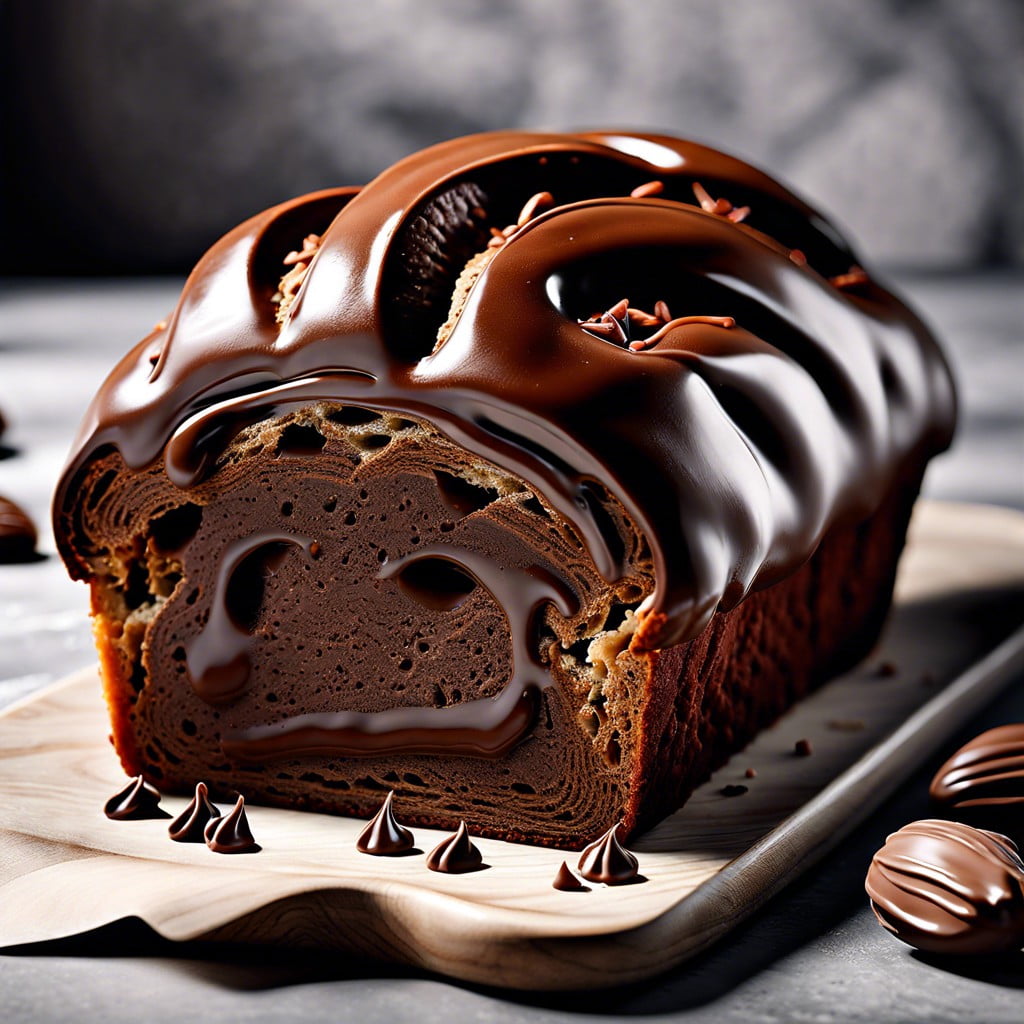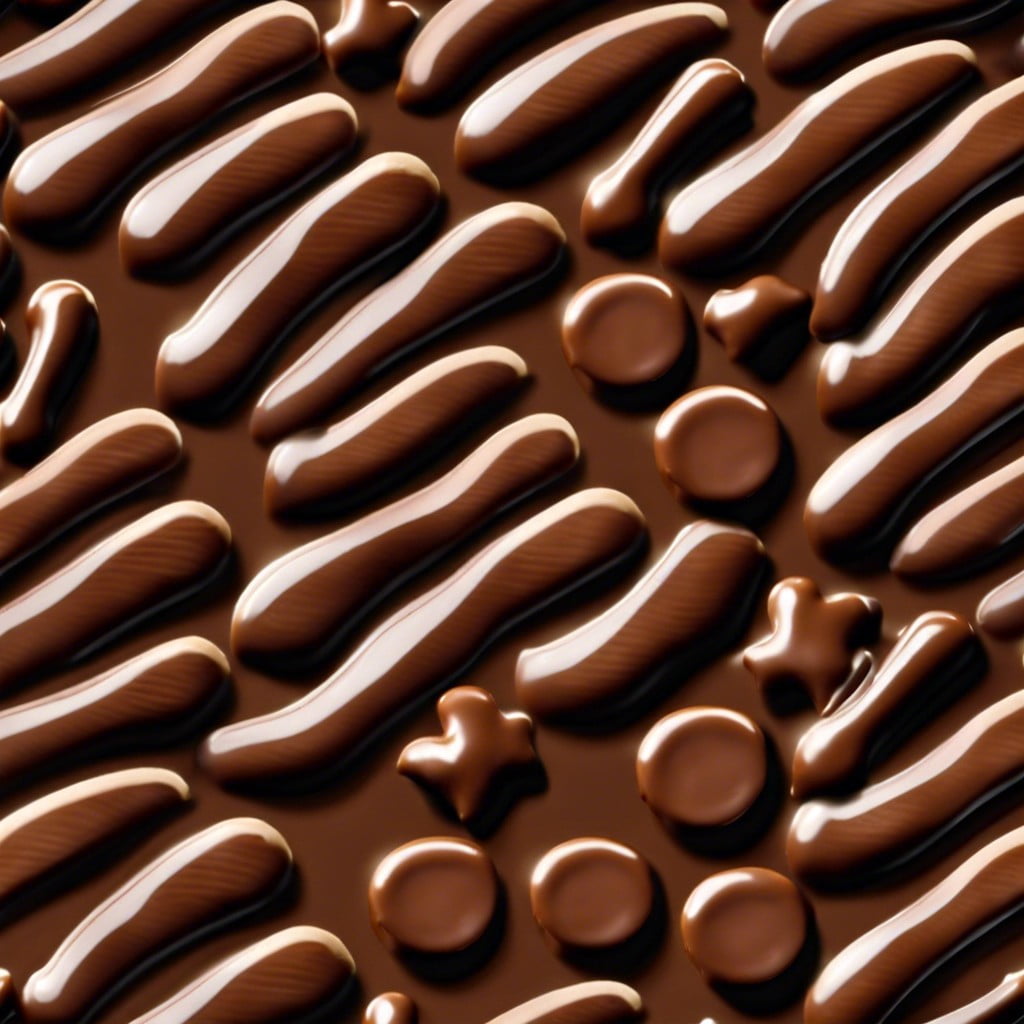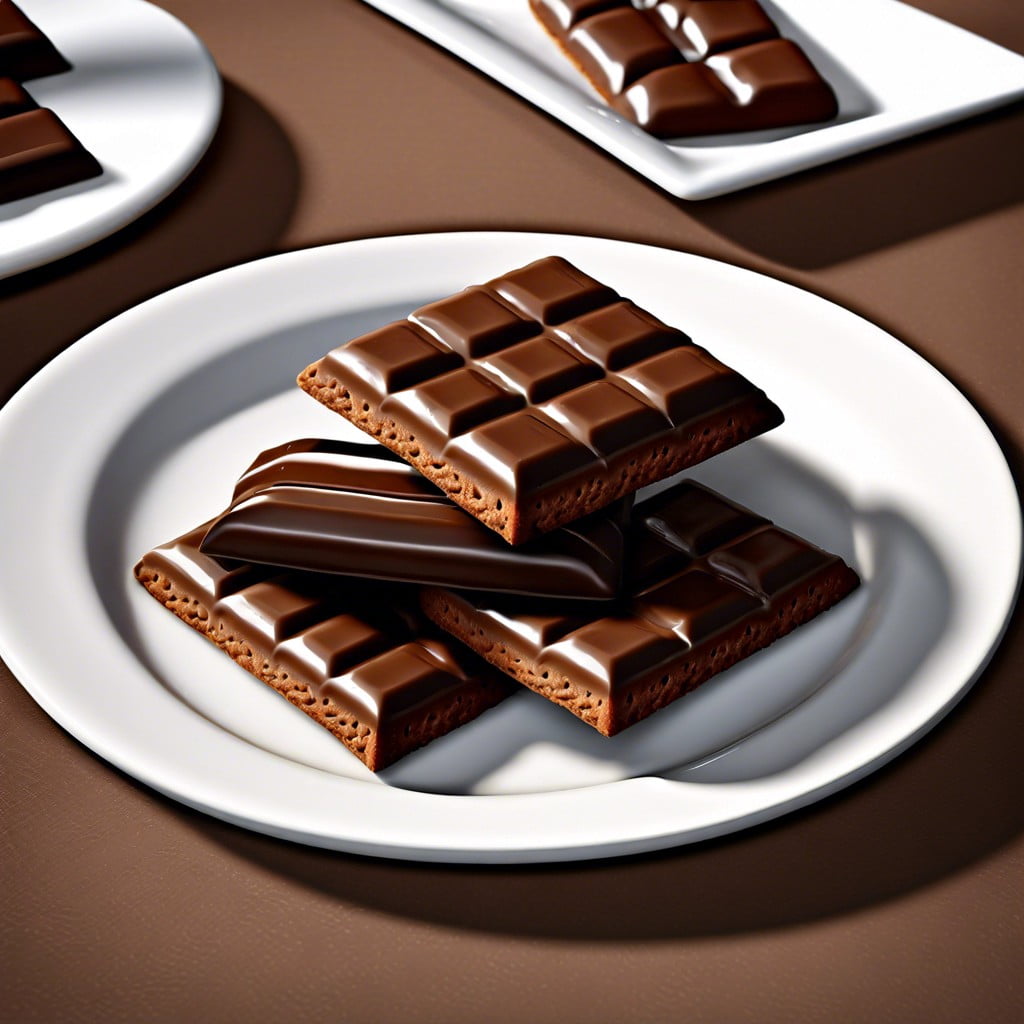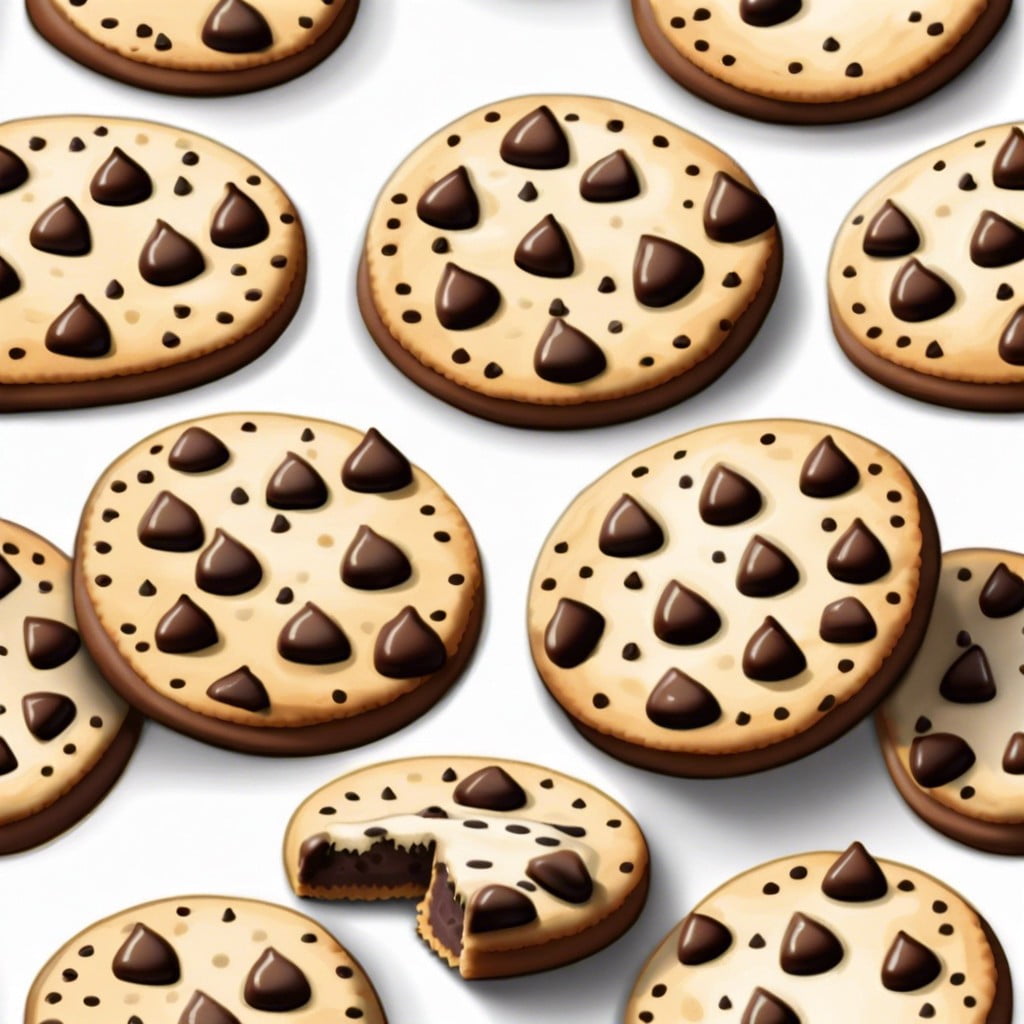Discover the delightful process of creating mouthwatering chocolate chip cookies without using butter, ensuring a healthier yet equally satisfying treat.
Making chocolate chip cookies without butter is entirely possible and just as delicious. This article will guide you through a simple recipe that substitutes butter with alternatives like coconut oil or applesauce, without compromising on the delectable taste of your favorite cookies.
The detailed steps provided will ensure a foolproof baking experience. The secret lies in the right balance of ingredients, which this article will help you master. So, get ready to bake some scrumptious, butter-free chocolate chip cookies that everyone will love.
Key takeaways:
- Use alternatives like coconut oil or applesauce instead of butter.
- Adjust the amount of substitute to achieve desired texture.
- Key ingredients: flour, baking soda, salt, fat substitute, sugars, vanilla, eggs, chocolate chips.
- Follow the step-by-step process to ensure foolproof baking.
- Tips: room temperature ingredients, high-quality chocolate chips, avoid overmixing, use parchment paper, even cookie size, cool on baking sheet.
Inside
Ingredients for Chocolate Chip Cookies Without Butter
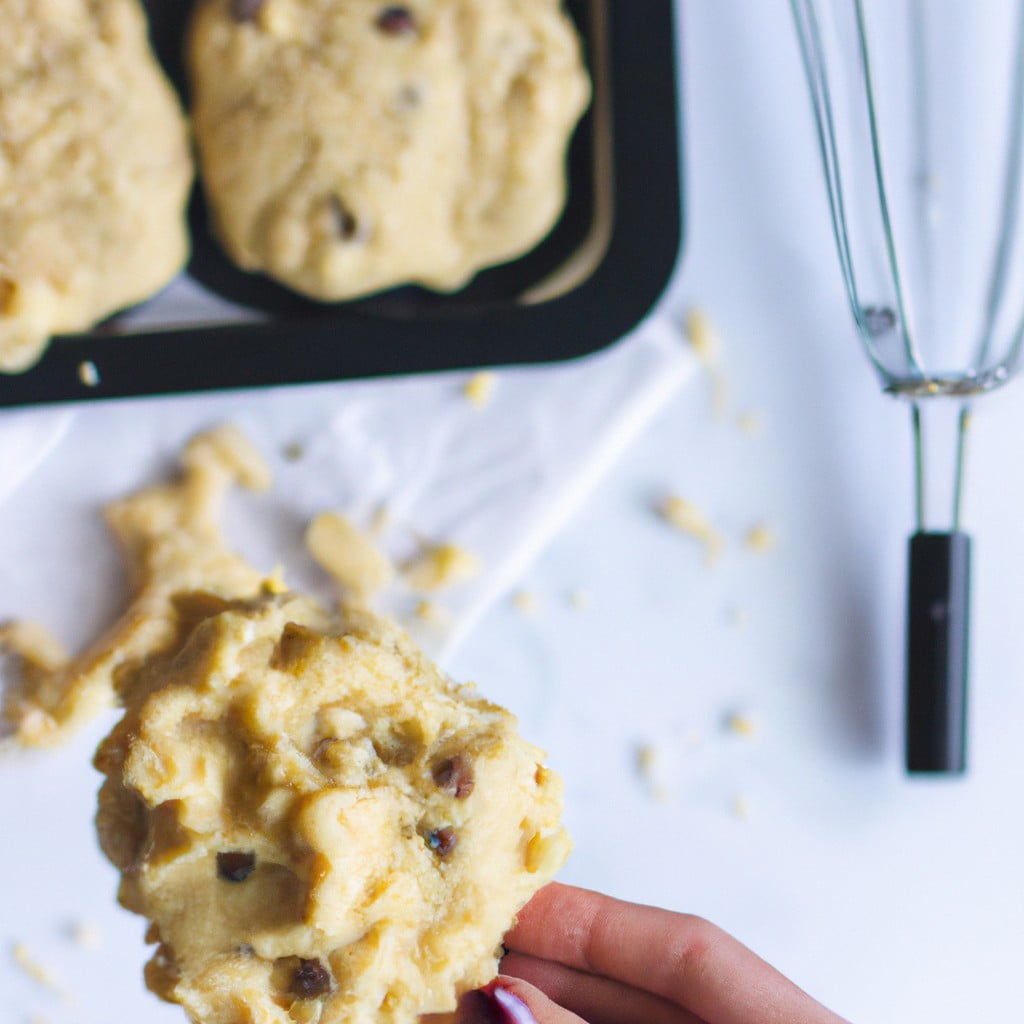
To craft a batch of luscious chocolate chip cookies without the use of butter, the following ingredients are necessary:
- All-purpose flour for your base, serving as the main body of the cookie.
- Baking soda to give the cookies their quintessential rise and puff.
- Salt to balance sweetness and enhance the chocolate flavor.
- An alternative fat source such as coconut oil or applesauce to fill in for butter, offering moisture and texture.
- Granulated sugar and brown sugar, both crucial for sweetness and structure.
- Vanilla extract, a subtle yet critical enhancer of flavor.
- Eggs, the binder that holds everything together.
- Chocolate chips, the star of the show, provide delightful bursts of chocolate throughout the cookie. Don’t shy away from generously adding these.
Knowing the function of each ingredient can shed light on their irreplaceable roles, hence altering one element necessitates an equally functional substitute. Stand by for in-depth exploration of butter substitutes in the upcoming context.
Substitutes for Butter in Baking Chocolate Chip Cookies
Several alternatives can be used to replace butter in baking, each providing its unique touch to the final product:
1. Applesauce: A favorite for health-conscious bakers as it drastically reduces fat content. Use it in a half quantity to the butter asked in the recipe.
2. Greek Yogurt: Works brilliantly in providing moistness and enhancing protein content. Use half the Greek yogurt to the butter quantity mentioned.
3. Coconut Oil: Matches butter in fat content and richness. Replace in a 1:1 ratio.
4. Avocado: A healthier alternative providing similar creaminess as butter. Use it in the same quantity.
5. Banana: A brilliant butter substitute offering rich, moist texture. Use an equal amount as butter.
Following these substitutions, you can customize your chocolate chip cookies to cater to dietary preferences or needs, or even to experiment with flavors and textures. Just remember that each substitute may have a different impact on the texture and taste of the cookies.
Process of Making Chocolate Chip Cookies Without Butter
Begin by preheating your oven to 375 degrees Fahrenheit (190 degrees Celsius) and lining a baking sheet with parchment paper.
Proceed by combining the dry ingredients in one bowl. These consist of 2 cups all-purpose flour, 1/2 teaspoon baking soda, and a pinch of salt.
In a separate bowl, mix together butter alternatives, which can be 1/2 cup of unsweetened applesauce, a mashed, overly ripe banana, or 1/2 cup Greek yoghurt and 1 cup of granulated sugar. If using the latter, you will note a tangy taste that pairs well with chocolate.
Add one large egg and two teaspoons of vanilla extract to the wet ingredients and mix until well combined.
Follow by slowly incorporating the dry ingredients with the wet mixture. Doing this step gradually prevents overmixing, which can result in overly dense cookies.
Mix in 1 to 2 cups of chocolate chips, depending on how “chippy” you like your cookies.
Scoop dollops of dough onto the baking sheet, ensuring there’re at least two inches between each scoop for spreading.
Bake for 10-12 minutes until they’re golden brown around the edges. Cool completely on the baking sheet before moving to prevent them from falling apart.
Remember, these cookies will likely be softer than those made with butter, due to the moisture content of the substitutes. The results, however, are just as satisfying in taste and texture.
Tips for Perfect Chocolate Chip Cookies Without Butter
Start with room-temperature ingredients. This aids in better blending, especially for the egg substitutes.
Use high-quality chocolate chips. The chocolate is the star of the recipe, so opt for the best you can find.
Don’t overmix your dough. Too much mixing can lead to tough cookies. Stop as soon as the dry ingredients are combined.
Use parchment paper or a silicone baking mat. These prevent the cookies from sticking without adding any extra fat.
Ensure even cookie size for even baking. Using a cookie scoop or a measuring spoon can help achieve uniformly-sized cookies.
Allow the cookies to cool on the baking sheet. They will continue to cook from the residual heat, resulting in a perfect consistency.
Experiment with different egg substitutes. Flax eggs, applesauce, and mashed bananas each bring unique textures and flavors, so don’t be afraid to try different things to find your favorite.
Finally, remember to enjoy the process, as baking should be fun and rewarding!
Understanding the Role Ingredient Substitutions Play
Ingredient substitutions in baking can affect texture, taste, and nutritional content, although appropriate changes can maintain recipe integrity. Butter, often the “fat” component in cookies, provides moisture and richness but can be successfully substituted.
Applesauce: This works well as a butter substitute in many recipes. It promotes a slightly denser, moister texture and is lower in fat. A 1:1 ratio can be used, however, this may impact the cookie’s sweetness.
Banana: Like applesauce, ripe mashed bananas can replace butter. This can introduce a subtle banana flavor and can make your cookies a tad denser.
Greek Yogurt: At half the amount of butter, Greek yogurt maintains moisture while reducing fat. Being careful to prevent any potential “doughy” texture is important though.
Avocado: It contributes healthy fats, like those found in butter. Replace in a 1:1 ratio but remember it may impart a slight greenish tint to your cookies, ideal for the health-conscious but perhaps not for traditional chocolate chip cookie lovers.
Coconut Oil: Rich in beneficial fats, it serves as a direct 1:1 substitute. It may impart a faint coconut flavor, but it often complements the soupçon of chocolate chips rather nicely.
Remember, each substitute can slightly affect the texture and taste of your cookies. A strategy worth considering is opting for a combination of these replacements rather than relying on just one. This can create a balanced flavor profile and texture closer to the classic counterpart.
How to Freeze Butterless Chocolate Chip Cookies
Once the dough of the butterless chocolate chip cookies is mixed and shaped into balls, they can be readily frozen for later use. This simple step increases their shelf life, while retaining their fresh, homemade taste when baked.
Firstly, arrange the unbaked cookie dough balls on a baking tray. Make sure to leave enough space between each to avoid sticking together.
Next, place the tray into the freezer for about two hours, or until the cookies are firm. This initial freezing stage is crucial to ensure that the cookies maintain their shape.
Once the cookies are firm, transfer them to a heavy-duty freezer bag. It’s essential to squeeze out as much air from the bag as possible before sealing it.
Finally, it’s important to label the bag with the date. The cookies can be kept in the freezer for up to three months. When ready to bake, simply place the frozen dough on the baking sheet and allow an extra couple of minutes in the oven.
This way, even without butter, you can always enjoy freshly baked cookies straight from your oven anytime. Just make sure to keep an eye on them while cooking, as the baking time may slightly vary.
Storing Leftover No Butter Chocolate Chip Cookies
Leftover cookies should be kept in an airtight container at room temperature. Storing them correctly helps to preserve their taste and texture for as long as possible.
Choose a container with a tight-fitting lid to prevent moisture and air from seeping in and making the cookies go stale faster.
Before storing, ensure the cookies have completely cooled. Placing warm cookies into a sealed container can lead to condensation, making them soggy.
Lay the cookies flat in the container, ensuring they do not overlap or pile on each other. This minimizes breakage and crumbling.
For longer storage periods, consider freezing the cookies. Ensure they are thoroughly cooled and wrapped tightly in plastic wrap before placing them into a resealable freezer bag.
When ready to consume, allow them to come to room temperature on the countertop.
Avoid storing cookies alongside strong-smelling foods, as they can absorb odors.
For optimal results, consume the cookies within a week.
The Science Behind No Butter Chocolate Chip Cookies
Butter is traditionally used in cookie recipes for its ability to create tenderness and add flavor. However, when it’s removed, a couple of noticeable changes occur.
Firstly, butterless cookies will be less moist and flaky. The moisture content in butter plays a significant role in creating the melt-in-your-mouth texture that we commonly associate with baked goods.
Secondly, the taste might slightly vary. The flavors imparted by butter are usually rich and creamy. Without it, the taste of the other ingredients like sugar, chocolate, and the chosen butter substitute becomes more prominent.
Thirdly, a lack of butter could affect the cookie structure. In traditional baking, butter aids in creating steam as the cookies bake which leads to the characteristic rise. Eliminating butter requires adjusting the rest of the ingredients to ensure the cookies do not turn out excessively flat, crumbly or dry.
Making this adjustment calls for a suitable butter alternative. Options include nut butters, fruit purees, coconut oil, or yogurt. The choice should be based on your dietary needs or preferences.
Understanding these changes will guide you in selecting the perfect substitute for your cookies. You’ll want a substitute that imitates, as closely as possible, the properties of butter — particularly its moisture content and ability to help cookies rise while baking.
FAQ
Can I use oil instead of butter in cookies?
Yes, you can substitute butter with oil in cookie recipes. Use half the amount of oil and add additional liquid until the dough achieves the correct consistency.
What happens if you don’t add butter to cookies?
If you neglect to add butter to cookies, the result can be a flavorless, dry, crumbly, tough cookie because the tender richness of butter is missing, leaving a product that may not align with traditional cookie expectations.
Does butter matter for cookies?
Indeed, butter plays a crucial role in determining the structure, texture, and overall quality of cookies through its influence on gluten development and achieving the desired crispness, flakiness, or cake-like qualities.
What are some healthy alternatives to butter in baking cookies?
Healthy alternatives to butter in baking cookies include avocado, Greek yogurt, applesauce, pumpkin puree, and coconut oil.
How can the taste and texture of cookies be affected when substituting butter?
Substituting butter in cookies can affect their taste and texture by making them possibly less rich and flaky due to the change in fat content and melting point.
Can margarine work as a substitute for butter in chocolate chip cookies?
Yes, margarine can be used as a substitute for butter in chocolate chip cookies.
